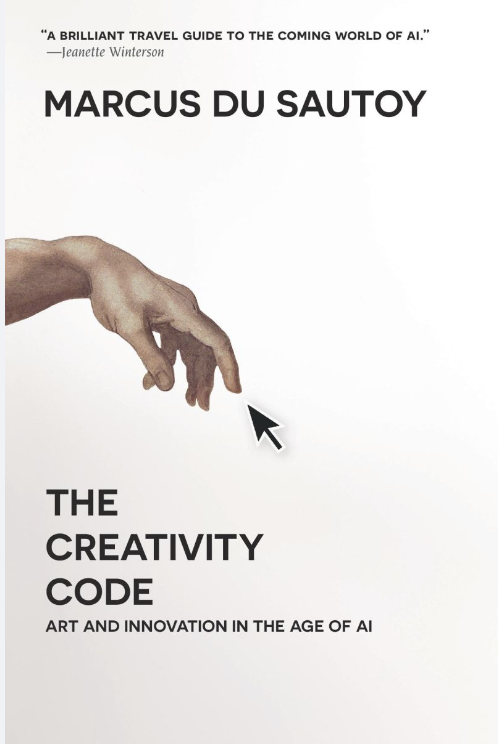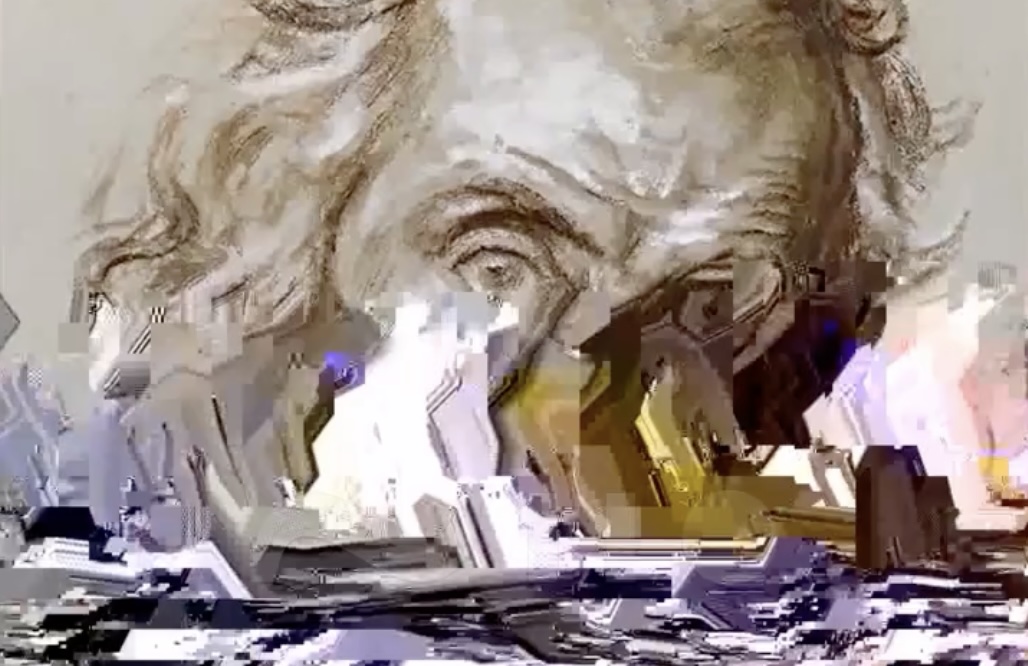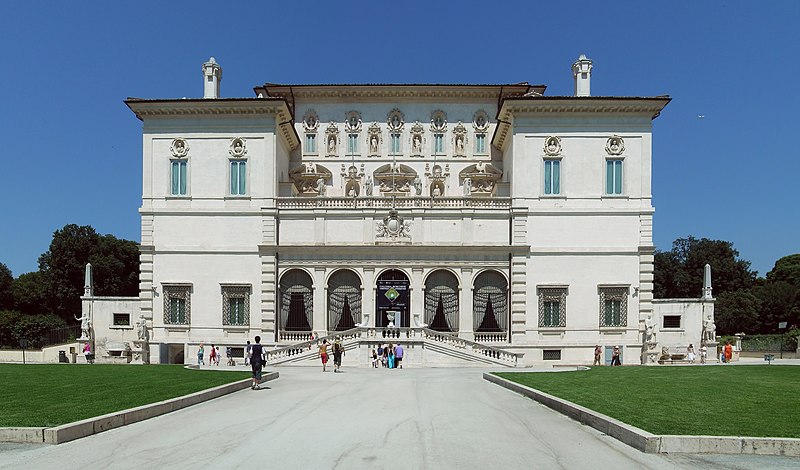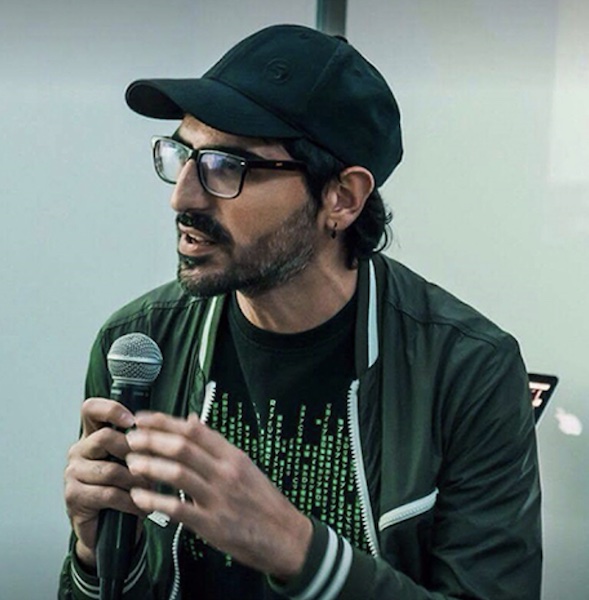Domenico Barra and Pau Waelder
DISØRDINARY BƏAUTY is an ongoing art project by Domenico Barra that explores ugliness through glitch art. The project has been developed as a series of NFTs, with a new phase taking place on Niio as a work in progress, in which the artist will periodically upload new artworks and accompanying documentation. Here in the Editorial section, we are publishing email exchanges bringing light into Domenico’s creative process and the ideas and influences behind this project.
Follow Domenico Barra’s work in progress on your screen in DISØRDINARY BƏAUTY: art canon
Fourth ɛʍǟɨʟ exchange
from: Pau Waelder
to: Domenico Barra
date: Feb 8, 2024, 8:48 PM
subject: Re: Disordinary Beauty #04-05 on Niio
Hi, Domenico!
It’s been a year since we started this collaboration and I am deeply thankful for your unwavering commitment to creating new artworks and your generosity in sharing them in this series on Niio.
So, let me get to the questions! (in attachment) I explored your blog and found a treasure trove of content there.
Please let me know if anything is not clear, I know the questions are a bit long, so please bear with me 🙂
Best wishes,
Pau
from: Domenico Barra
to: Pau Waelder
date: Feb 12, 2024, 11:14 AM
subject: Re: Disordinary Beauty #04-05 on Niio
Hola Pau, qué tal?
Thank you so much for finding the time to read my blog and prepare these questions.
Taking part in the Art cast series for Niio has been essential, it is allowing me to expand my DB project and explore more the aesthetic of portraits and the [thorn] sense of beauty, learning about artists of the past, new stories, and also test new video codecs. I have a long list to try, my FFmpeg is on fire. I must say that I hope one day to see some of these works exhibited in a gallery, maybe, who knows. I am also looking forward to adding audio, the next video will have audio.
I hope you will find my answers to your questions interesting, and thank you so much for this opportunity. It’s an honour and pleasure to share my thoughts and stories with you. Great respect for that.
Sincerely,
d0/\/\!
Domenico Barra. DB a̶r̶t̶ ̶c̶a̶n̶o̶n̶ | a̶f̶t̶e̶r̶_̶g̶e̶m̶i̶t̶o̶, 2023
Let’s start with the portrait of Vincenzo Gemito. I didn’t know about this artist and became fascinated after reading your blog post. This is the second self-portrait in the series, after the one by Carl Joseph Begas, and it is a very different kind of work: a very intimate and mesmerizing depiction of the “scultore pazzo” which makes me think about the internal struggles that all artists go through and the possible connection between madness and glitch, as both diverge from the expected, the system that works and is stable. I wonder why you chose this portrait, did you want to explore these connections? Maybe some self-introspection of your artist persona?
My journey into the realm of art began at a pivotal moment in my life. Back in the day, I had recently embarked on a new chapter by moving to England, mostly motivated by the necessity to face my inner demons, seeking to discover my true self. At the cusp of turning 20 years old, it was my first experience living independently as a foreigner abroad. I needed to overcome my insecurity, anxiousness, and restlessness, I needed to find some peace of mind. Amidst this transition, art emerged as my guiding light, offering a profound avenue for exploring my fragilities and grappling with the myriad challenges I encountered.
It was during those years that I found out and finally started to face my OCD and experimenting ways to hack it and keep those intrusive thoughts under control, something that finally I managed to do brilliantly. Reverse engineering my brain was one hell of a trip.
But it all started well before that. The human mind glitches I encountered along the way are quite few. Living alongside my two autistic cousins from a young age exposed me to the diversity of human experience and instilled in me a fondness for the atypical. This early exposure to altered states of the human consciousness also fostered a curiosity within me, driving me to delve deeper into the complexities of human nature.
“The disability is in the society as a whole, and not the individuals, everyone is a single story.”
Through art, I found solace in embracing the vulnerabilities that define us, recognizing that true understanding stems from empathizing with the struggles of others who are conditioned by a society that is not able to allow everyone to be who they are based on their particular condition. The disability is in the society as a whole, and not the individuals, everyone is a single story. By this I mean that if a society doesn’t manage to be inclusive, enabling people to have a peaceful life, adapting to peculiar necessities, then it is the society having issues and not the people in need of certain conditions to have a decent life.
My interest in the human psyche was further fueled by encounters with institutions like the old Psychiatric Hospital Leonardo Bianchi in Napoli during the projection of a documentary that was telling the stories happening behind those walls. I walked by this place everyday and that always tickled my curiosity and imagination. Witnessing the resilience and humanity amidst conditions often stigmatized by society reshaped my perception of madness and reinforced my commitment to amplifying the voices of the vulnerable whenever I had the chance to tell their stories.
The attention towards the reality of a psychiatric hospital became even stronger once I had the chance to visit the dismissed forensic psychiatric hospital S. Eframo in Napoli. It had been redeveloped by a group of activists that now operate part of this building to support minorities and marginalized people offering various social services such as medical assistance, language schools for asylum seekers, entertainment and politics. I remember walking through the corridors and reaching the rooms where the psychiatric inmates were kept and assisted, probably one of the strongest experiences ever in my life. I spent hours reading the messages they left on the walls, it gave me goosebumps.
“Witnessing the resilience and humanity amidst conditions often stigmatized by society reshaped my perception of madness and reinforced my commitment to amplifying the voices of the vulnerable.”
In the pursuit of authentic artistic practices and driven by inclusivity, I drew inspiration from The Surrealist Manifesto by André Breton, a book I treasure with admiration. It influenced me to the point that I felt the urge to celebrate the wild and untamed manifestations of creativity, probably somehow with the intention to give space to my disorder and exploit its tendency for the absurd. Living in a shared house with friends akin to the surrealists’ ethos, where freedom of expression reigned supreme, opened my eyes to the transformative power of art in fostering connections and dismantling conventions. At the time we were also hugely influenced by a successful series titled The Mighty Boosh and its unusual storytelling. This was an incredible experience because I learnt the empowering potential of art for self expression and self awareness.
When selecting Vincenzo Gemito for my series on Niio, I was drawn to his tumultuous past and relentless pursuit of perfection—a stark contrast to my own embrace of imperfection, but also being aware of Gemito’s background and surroundings as I walked these same streets of Napoli in my own boots too, I was also shaped by its conflicts and culture. We are both artists, neapolitans. I have known his work for a long time, since I’ve seen it many times at the Museo di Capodimonte, a place we had previously had a chance to talk about, and it felt natural to relate to him and his condition as artist and human.
Through glitch art, I find a means of decoding the complexities of life, using glitches as metaphors for the fragility and disordinary beauty inherent in the human experience. More personal experiences, such as witnessing the ravages of Alzheimer’s and dementia in people very close to me, have profoundly influenced my artistic journey, imbuing my creations with a sense of empathy and introspection. In essence, my artistic odyssey is a testament to the transformative power of creativity in navigating life’s complexities and embracing the inherent imperfections that define us.
“Through glitch art, I find a means of decoding the complexities of life, using glitches as metaphors for the fragility and disordinary beauty inherent in the human experience.”
Through glitch art, I seek to illuminate the beauty found within life’s and society’s glitches and celebrate the diversity of human existence. In the first series that gave birth to the DIS/verse projects, DISØRDINARY BƏAUTY | ⚡ BÆUTY IZ CH∆ØZ ⚡ , those hauntingly beautiful generative glitch art portraits are unknown lost souls in the short circuits of society, of life. A reminder that many people stay invisible, unrecognizable, and unknown because society isn’t inclusive at all.
The DIS/verse projects include: Noise Source, Ecstasy of Creation, Witness of Madness, The Beautiful Minds and D.B. | Beauty is Chaos
Gemito’s stare in this self-portrait is so powerful and it resists all distorsions and remains as a haunting presence. How was it “breaking” this image? Did it resist the glitches? Would you say you succeeded?
It was definitely a bit of a challenge to choose the right portrait from Gemito’s extensive body of self-portrait works. Ultimately, I settled on this particular one that I felt captured the essence of what I wanted to convey through my glitch art version. The decision to focus on this specific portrait was influenced by several factors. Firstly, its composition lent itself well to the format I needed considering the constraints of adapting it to fit a screen, allowing me to center it effectively within the frame was an important feature. Gemito’s posture, with his bending and leaning forward, added a dynamic element that I found intriguing and visually engaging. Moreover, the intensity of Gemito’s stare in this portrait struck me as particularly powerful. I wanted to capture and amplify this sense of tension and vulnerability in the final glitched rendition. To achieve this, I deliberately chose codecs known for their ability to heavily distort and break images, pushing the boundaries of visual disruption to create a thunderous effect. In addition to utilizing these codecs, I also employed a generative glitch script to further enhance the explosiveness of the sentiment and of the final composition.
Despite the chaotic nature of the glitches, I wanted Gemito’s presence to remain palpable and unwavering amidst the pixelated turmoil. His greatness, I believe, transcends the distortions and disruptions, serving as a testament to the enduring legacy. The resulting artwork stands as a visual manifestation of his unstable journey, a poignant reminder of the enduring power of artistic expression and vulnerability of the human mind, so great and so fragile.
Domenico Barra. DB a̶r̶t̶ ̶c̶a̶n̶o̶n̶ | a̶f̶t̶e̶r̶_̶v̶i̶g̶é̶e̶_̶l̶e̶_b̶r̶u̶n, 2023
The fifth artwork in this series is dedicated to a portrait by the celebrated painter Elisabeth Louise Vigée Le Brun, who is also the first female artist in the Disordinary Beauty project. The portrait you chose is quite special, because it is a commission that Vigée Le Brun had trouble finishing due to the “extreme ugliness” of the sitter, Princess Maria Luisa di Borbone. It is a captivating story in the context of a work exploring beauty and ugliness through glitch art. What drew your attention to this portrait? Since the canons of beauty have particularly been imposed on women, what do you make of this depiction of a woman despised for her apparent lack of beauty made by a woman artist who put her talent into applying a “beauty filter” to her portrait?
Initially, I must admit, I found this story rather amusing. The idea that even a figure as powerful as a queen could be subject to mockery and ridicule due to her physical appearance struck me as both intriguing and somewhat ironic. It highlighted the harsh reality that ugliness is not forgiven – regardless of one’s status or privilege, it can still be used as a tool for discrimination and derision, especially if you are a royal and your status is close to the divine, and beauty is strongly related to the divine.
I couldn’t help but wonder if Maria Luisa’s royal status played a role in how her appearance was perceived and depicted. Historically, powerful figures often sought to be portrayed not as they truly were, but rather in a way that projected an idealized image of themselves. This was particularly prevalent among royals, where marriages within the same bloodline often led to genetic conditions and physical imperfections, I believe artists were often invited to leave these possible particulars out.
“The idea that even a figure as powerful as a queen could be subject to mockery and ridicule due to her physical appearance struck me as both intriguing and somewhat ironic.”
I presume that for both the subject and the artist, there was a vested interest in creating an image that aligned with societal standards of beauty, and if not perfection at least tradition. This becomes especially significant when considering the vulnerability of women in a male-dominated society, where power and talent are often associated with the male sex, a portrait was also a symbol of power and wealth, it had to be good for the royal and the artist, of course, wanted her work to be at least in her standard, I guess.
While ugliness has long been a theme in art, typically associated with depicting societal outcasts and villains, this artwork challenges conventional beauty standards in a contemporary context. It addresses at some level the use of synthetic solutions, like the ongoing issue of ugliness being stigmatized and filtered out of society even if often resulting in an exaggerated, grotesque version of beauty that becomes rather ugly, I am thinking at some selfie beauty filters, and plastic surgery that most of the time are big time failures.
Of all the pieces I’ve created for DISØRDINARY BƏAUTY | a̶r̶t̶ ̶c̶a̶n̶o̶n̶s̶, I believe this one stands out as the most thought-provoking. It serves as a reflection of society’s obsession with masking imperfections and the consequences of striving for a manufactured version of beauty, and I am not talking just about beauty in the context of beauty, imperfections are filtered out from all sort of images that need to convey an aura of superiority, because that ugly detail can easily be seen as a weakness and the appreciation of artists often relies in their ability to make someone “ugly” look more majestic, beautiful, divine. While I am here writing, I just received an email from a photo editor offering me his service to correct the imperfections present on the headshots published on my Instagram because he could with his editing magic make those portrait photos look more beautiful. That’s a very ironic coincidence.
Finally, it feels necessary to mention a parallel research that you are carrying out using AI tools, “THƏ L∆B ØF ∆NØM∆LIƏS.” Here you produce much more unsettling images, which your followers can find on Instagram. Which parallels and differences would you draw between “traditional” glitch and this “AI-powered glitch” of beauty in the creation of machine-assisted ugliness?
The DIS/verse project has been an ongoing journey, constantly expanding as I delve deeper into the ever-growing sphere of aesthetics, particularly as new media technologies become increasingly integrated into our daily lives. My initial foray into AI experimentation began several years ago with StyleGAN, where I was intrigued by the potential of AI to infuse new layers of meaning into artistic works and the actual practice of art and what is means to be an artist in the age of “intelligent” machines. Can artistic intelligence and artificial intelligence create something that is more puzzling and arousing than what we have seen so far in art?
However, as I delved further into AI-influenced artistry, I couldn’t help but notice the inherent limitations that often arise when we become entangled in the very media we seek to explore. It’s a delicate balance between harnessing the potential of AI as a creative tool and avoiding the trap of allowing the medium to dictate the outcomes.
“By deliberately misusing AI tools, I aimed to create images that defy conventional expectations and provoke a deeper engagement with the uncanny.”
My motivation has always been to push the boundaries of what is possible with AI, to transcend the standard modes of use and challenge both myself and the audience to the unexpected. This parallels my approach to glitch art, where the exploration of the unexpected is paramount. I want to put the machine in the condition to generate something where I can lose, or have little, control on it. In most cases of databending I select the glitches I believe are the most interesting, the same happens with the present text-to-image/video apps. I select the images that I believe have some intriguing features. Sometimes it feels like pulling the bar at a slot machine hoping to strike a winning jackpot.
This series titled DISØRDINARY BƏAUTY | “THƏ L∆B ØF ∆NØM∆LIƏS”, specifically designed for Instagram, was born out of curiosity and a desire to explore how AI could reinterpret my glitch art works part of DISØRDINARY BƏAUTY | ⚡ BÆUTY IZ CH∆ØZ ⚡ . It all began with a simple question: What would my glitch art look like if created by AI? This curiosity was sparked when I stumbled upon one of my works in an AI dataset used for training models, prompting me to explore further.
Using an AI app called Starry.AI powered by Stable Diffusion, I experimented with crafting prompts to generate images inspired by my disordinary glitch art. With each attempt, I sought to evoke novelty, complexity, and ambiguity – qualities that I believe are essential to true aesthetic arousal, as described by psychologist D. E. Berlyne, an approach that has also inspired Dr. Ahmed Elgammal for his strategy to develop artistic AI models at Rutgers University, a methodology described by Marcus du Sautoy in his book The Creativity Code.

I gradually and intentionally crafted prompts that veered away from the mainstream pursuit of beauty, as most of the AI images online aim at creating images that are luminous, soft, polished, shining, unless candy-coated weirdness, instead I preferred embracing imperfection and ugliness as a counter-narrative to the prevailing aesthetic norms spreading online. I wanted my AI portraits to be raw, rough, cruel, and oddly more realistic somehow than extreme standardized beauty. This exploration also highlighted the biases inherent within AI systems, particularly regarding representations of gender, race, and disability. Tendentially text-to-image apps works well with standard words that mostly recall beauty, harmony, peace, but do start to struggle with words that are a little more offgrid like “disfigured”, “deformed”, “disable”, “arab”, “asian”, “albino”, “autistic”, and so on.

By challenging these biases and deliberately misusing AI tools, I aimed to create images that defy conventional expectations and provoke a deeper engagement with the uncanny. It’s about exploring the limit within the AI system itself while misusing the standard of prompts, pushing its boundaries to generate something truly unexpected and thought-provoking. I also didn’t want to produce AI images that looked glitchy. In a conversation with other glitch artists we all agreed that probably a glitch in these AI apps won’t look like the glitches we are used to. But probably it had to do with something unexpected. This is why I I like to go against the tide. This is why I focused on the prompts, crafting either over complicated prompts, using words that often even get blocked by the AI systems, or using L33T SP34K. Doing the wrong thing the right way. Approaching AI with a glitch mentality. Thinking of prompting as a sort of databending.
“I didn’t want to produce AI images that looked glitchy. This is why I focused on the prompts, using words that often even get blocked by the AI systems, or using L33T SP34K. Approaching AI with a glitch mentality. Thinking of prompting as a sort of databending.”
In essence, my goal is to embrace the imperfections and anomalies within both glitch art and AI, blurring the lines between human creativity and machine capacity to create a truly unique and unusual, and eventually disturbing and unsettling, maybe annoying, artistic experience online in the context of a social media, Instagram, that is the temple of staged perfection. Imagine scrolling Instagram feed, or even the page for the hashtag “beauty”, or “pretty” and you come across one of these images. I think this is also a glitch practice, alter the experience of a steady numbing scroll infecting the flow with something that is completely the opposite of what people are comfortably ready to expect. The image itself becomes a glitch on the system of the photo grid and the system of the content experience on Instagram.





















